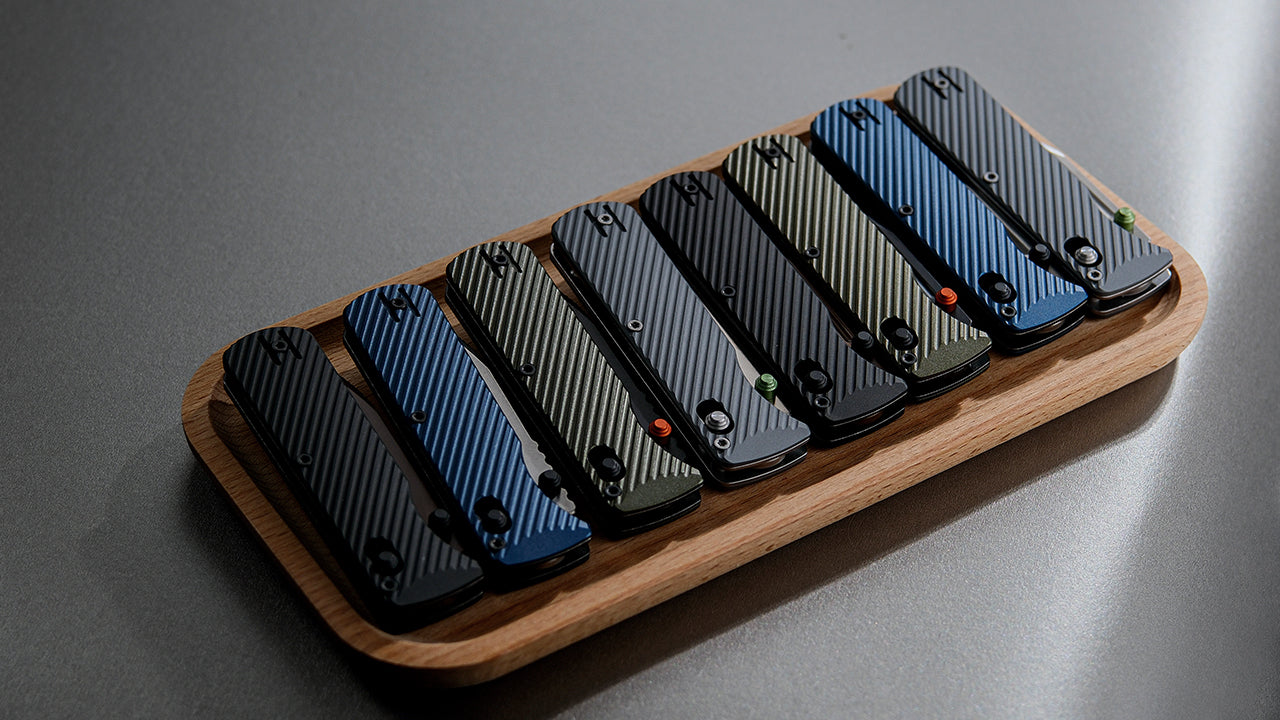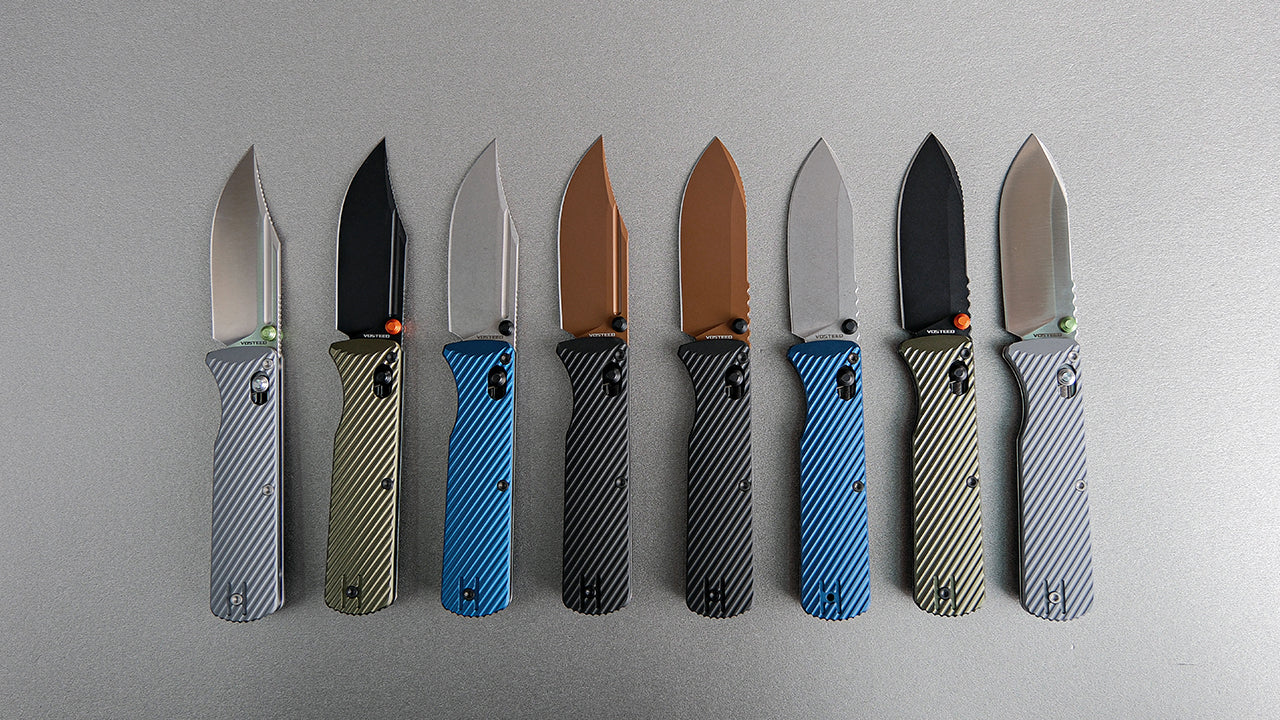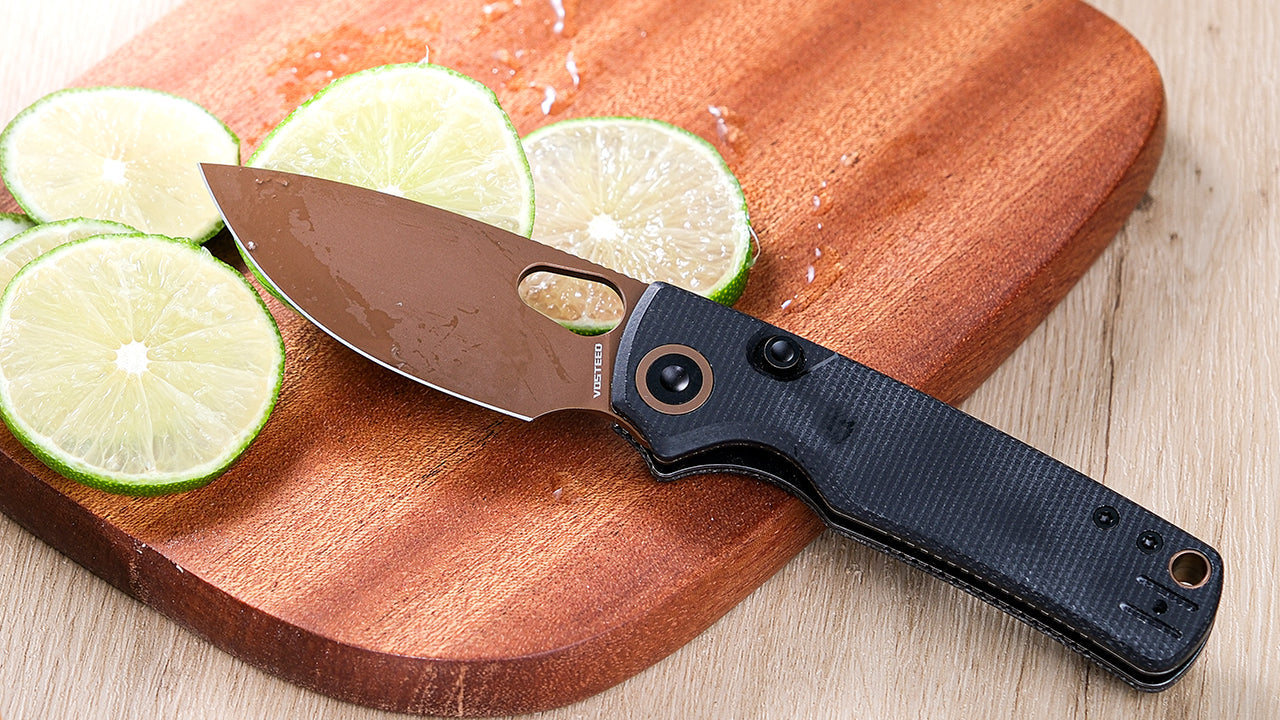In the universe of modern folding knives, the lock is not just a component; it is the soul of the knife's usability, security, and functionality. The development of the industry relies on continuous innovation, with every locking mechanism bearing testament to manufacturers' and designers' hard work and foresight.
In this article, we will guide you deep into such creative inventions, with special emphasis on certain exclusive creative locks, to help you choose the most suitable "guardian" for your most precious knife.
6 Classic Lock Designs Every Knife Enthusiast Should Know
Before exploring the latest innovations, let's first review some classic locks that are milestones in knife development history. These designs inspired countless subsequent innovations and continue to shine in the hands of knife enthusiasts worldwide.
1. Liner Lock
- Working Principle: Early versions of the Liner Lock can be traced back to the early 20th century, invented by knife pioneer William Franklin Watson. Its core lies in using a liner within the handle (usually a spring steel sheet) that automatically springs into place behind the blade's tang when the blade is deployed, preventing it from closing. Many modern designs feature clever variations; for those interested in exploring these, a wide selection of liner lock knives is available, showcasing various interpretations of this mechanism. Vosteed's product line, for instance, includes the specific top liner lock design, which further optimizes operability and reliability.
- Significant Contribution: Legendary knifemaker Michael Walker further improved, popularized, and innovated the liner lock, making it one of the most common and beloved lock types in modern folding knives.
- Features: Relatively simple structure, easy for one-handed operation, and good cost control make liner lock knives a widely adopted choice.
Acorn - Liner Lock (2.93" 14C28N Blade & Micarta Handle) - A3301
2. Frame Lock
- Working Principle: Created by the brilliant knifemaker and entrepreneur Chris Reeve, the Frame Lock can be seen as a reinforced version of the liner lock, typically using a portion of the thicker handle material (often titanium alloy) as the lock bar.
- Features: Robust structure, high strength, blending elegance, simplicity, and strength, commonly found in many modern high-end frame lock pocket knives.
Mini Labrador - Frame lock Knife (2.73" 14C28N Blade & Titanium Handle) - A3001
3. Back Lock / Lock Back
- Working Principle: The back lock is one of the earliest locking mechanisms. Its basic principle involves a spring-tensioned bar on the spine of the handle; when the blade is opened, the end of the tension bar engages a notch in the blade's tang, locking it.
- Significant Contribution: In the 1960s, Buck Knives improved and popularized the back lock with their classic Buck 110 model.
- Features: Classic and reliable structure, secure lock-up.
4. AXIS Lock / Crossbar Lock
- Working Principle: Co-created by the great knifemakers Bill McHenry and Jason Williams, the AXIS lock is the progenitor of all crossbar locks. It uses a set of Omega-shaped springs to drive a cylindrical steel bar to lock the blade. This mechanism, known for its strength and smooth operation, evolved into the popular crossbar lock type, seen in many crossbar kock knives and adopted by numerous brands and custom knifemakers.
- Significant Contribution: The AXIS lock is renowned for its excellent ambidextrous usability, ease of use, user-friendliness, and strength.
- Patent Status: The original patent has expired, allowing more manufacturers to adopt this superior locking mechanism.
Raccoon® - Crossbar Lock knife (3.25" 14C28N Blade & Micarta Handle) - A0503
5. Compression Lock
- Working Principle: Developed by Louis S. Glesser and his colleagues Peter H. Jhones and Vince Ford of Spyderco, the Compression Lock utilizes a leaf-like spring from the liner that wedges between the blade tang and the stop pin when the blade is deployed.
- Features: Powerful functionality, especially adept for safe, one-handed operation, a hallmark of many compression lock knives.
- Smock Derivative Design: Kevin Smock significantly enhanced the usability of the compression lock by adding a button-style actuator.
6. Button Lock / Plunge Lock
- Working Principle: The basic principle of the Button Lock is that a spring-driven plunger moves into or out of a locking slot in the blade's tang as the blade rotates.
- Features: Super simple and intuitive operation, making button lock knives very user-friendly.
Raccoon® - Button Lock Knife (3.25" 14C28N Blade & G10 Handle) - RC3SVG6
Vosteed’s Patented Knife Locks
Yue, a designer at Vosteed, drawing on his passion and deep understanding of knives, has created several unique patented locks aimed at providing users with a safer, more convenient, and more "fidget-friendly" experience.
1. Trek Lock - Vosteed Patent
- Design Philosophy: The Trek Lock can be seen as a "turbocharged" version of the aforementioned button lock, pursuing the ultimate "fidget spinner" playability.
- Core Structure: This Vosteed patented lock utilizes guide/positioning tracks, a conical and dome-shaped spherical pivot pin, and an internal stop point to precisely control blade movement.
- User Experience: The Trek Lock is incredibly "stress-relieving," perfectly combining multiple opening methods with an intuitive locking and unlocking mechanism for an exceptionally smooth operational feel. For those with a keen eye for innovative design, the Trek Lock knives in Vosteed's product range are not to be missed.
Corgi® - Trek Lock Knife (2.99" 14C28N Blade & Micarta Handle) - CG3SVM3
2. Vanchor Lock - Vosteed Patent
- Design Philosophy: The Vanchor Lock is another of Yue's innovative achievements, designed with a pursuit of lock strength and the ultimate "fidget toy" attribute.
- Core Structure: This Vosteed patented lock is supported by a thick steel plate and a 4mm steel block, aided by a magnetic connector that attracts and pushes the pivot button. It uses a square steel block and its non-parallelogram trapezoidal extension to form a solid lock under the tension of the steel plate and the downward pressure of the stop pin.
- User Experience: The Vanchor Lock combines various opening mechanisms, ensuring safety during use while providing unparalleled "fidget spinner" fun. Vosteed knives employing the Vanchor Lock also offer a new choice for users seeking a unique experience.
Corgi® V 295 - Vanchor lock® (2.95" S35VN Blade & Aluminum Handle) - A3708
Comparison Table: Pocket Knife Lock Types
To help you more intuitively understand the characteristics of different locks, we've compiled the following comparison table:
| Lock Name | Primary Inventor/Promoter (Original Text) | Core Features (Original Text) | Vosteed Relevance/Products |
| Compression Lock | Spyderco (Glesser, Jhones, Ford) | Leaf-like spring wedges, safe one-handed operation | Smock (Kevin Smock modification) |
| Smock (Compression Lock derivative) | Kevin Smock / Spyderco | Button actuator, enhanced usability | |
| AXIS Lock / Crossbar Lock | Bill McHenry & Jason Williams | Omega spring-driven crossbar, ambidextrous, easy to use, strong | Vosteed Core Product |
| Back Lock | Buck Knives (improved & popularized) | Spring tension bar engages blade tang notch | |
| Button Lock | Long history | Spring-driven plunger, simple and intuitive | Inspiration for Trek Lock |
| Trek Lock | Yue (Vosteed) | Patent, guide tracks, cone/sphere pivot, internal stop, ultimate "fidget toy" | Vosteed Core Product |
| Vanchor Lock | Yue (Vosteed) | Patent, thick steel plate + block, magnetic connector, square lock block, ultimate "fidget toy" & strength | Vosteed Core Product |
| Frame Lock | Chris Reeve | Handle frame as lock bar, elegant, simple, strong | Vosteed Core Product |
| Liner Lock (Top Liner Lock as its specific Vosteed implementation) | Michael Walker (improved & popularized) | Spring liner engages blade tang | Vosteed Core Product |
How to Choose the Best Pocket Knife Lock for Your Needs
There's no absolute "best" when choosing a folding knife lock; it depends more on your personal preferences, usage scenarios, and specific performance needs:
- Pursuing ultimate fidgetability and innovative experience? Patented designs like Vosteed's Trek Lock and Vanchor Lock are made for this, combining multiple opening methods and unique locking feels, ideal for "fidget spinner" enthusiasts.
- Prioritizing one-handed operation and safety? The Compression Lock and Crossbar Lock (and their derivatives) excel in this regard, with fingers typically away from the blade path during unlocking. Modifications to the compression lock (like the Smock design) further enhance usability.
- Need high strength and reliability? The Frame Lock, Crossbar Lock, and sturdy Back Lock are time-tested choices. Some innovative patented locks (like Vosteed's Vanchor Lock) also emphasize strength in their design.
- Prefer classic and simple? The Liner Lock (including its Top Liner Lock implementation in Vosteed products) and Back Lock are choices you can't go wrong with, boasting long histories and broad user bases.
Which Knife Lock Is Right for You?
The knife lock is the heart of a folding knife, crucial for safety and smooth operation. From classic Liner Locks and Frame Locks to Crossbar Locks, Button Locks, and innovative designs like Vosteed's Trek Lock and Vanchor Lock, locking mechanisms are constantly evolving.
Understanding the features of different locks and experiencing their unique feel will help you find the pocket knives that best suit you.
References & Notes:
- Pacella, Gerard (2002). 100 Legendary Knives. Krause Publications. p. 101. ISBN 0-87349-417-2.
- Ables, Tom (1991). The Story of Buck Knives a Century of Knifemaking. Buck Knives. p. 120. ASIN B000M155X4.
- Dick, Steven (1993-09-01). "The Chris Reeve Sebenza Folding Hunter". National Knife Magazine: 16–18.
- Darom, David (2003). Art and Design in Modern: Custom Folding Knives. Saviolo Publisher. p. 48. ISBN 978-965-07-1174-0.











Leave a comment
All comments are moderated before being published.
This site is protected by hCaptcha and the hCaptcha Privacy Policy and Terms of Service apply.